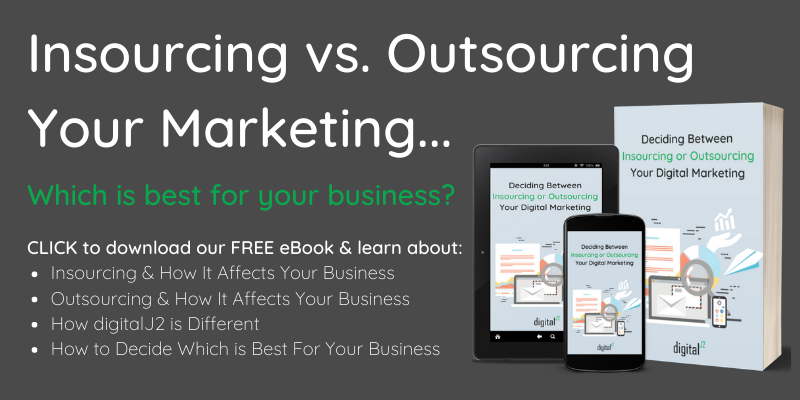
Though writing is considered a form of art, copywriting is actually more of a science.
It doesn’t matter if you use flowery language in the introduction or come up with a witty conclusion to wrap things up. If the email, blog, or eBook doesn’t coax the customer to do something, your words are pretty useless.
Six Questions to Ask Yourself When Writing Copy
There are six standard questions to answer when it comes to adapting the best copywriting practices, avoiding common errors, and prompting customer action.
Who?
What?
Where?
When?
How?
Why?
But not necessarily in that order. We’ll start with why.
Why Am I Writing This Copy?
You need to begin with a goal and determine why you are writing a piece of content.
Most likely, your objective is to get conversions from your call-to-action (CTA) at the end of the copy. You want someone to download an eBook, sign up for a newsletter, or engage on your social media page. The best copywriting practices convince the reader to take some sort of action and move them along in the buyer’s journey.
A common error is not having a clearly defined goal. This is the time to get specific and attract the clients you want, while repelling the ones you don’t. Appealing to the masses and speaking in general terms doesn’t work with copywriting. Set your sights on luring in the customers you want to inspire and persuade.
How Am I Going to Write It?
You must follow a set of procedures and figure out how everything will come together.
This is not something you want to make up as you go along. Great copywriters follow a proven process that keeps the end goal in mind and works for each project. The steps for best practices usually include:
- Conducting research
- Creating an outline
- Writing a draft
- Editing your work
- Reading the copy out loud
- Reviewing the final design
- Tracking performance
A common error is not following a plan and trying to wing it instead. A proven process keeps you on track with your objective in view. Otherwise, you might miss crucial steps and focus on the wrong aspects. Another frequent mistake is taking on too many tasks in the process at one time. You should focus on research or writing or editing—not all three at once.
Who Is Going to Read It?
You should keep your audience in mind and know who you are writing for.
Getting inside your customer’s head is key. You need to be aware of their fears, wants, and needs. You should understand their struggles and pain points. One of the best practices for relating to your audience is talking to your existing customers. Ask them open-ended questions about the benefits of your product and the unexpected perks they enjoy.
A common error is not understanding your audience’s motivation level. What is their stage in the buyer’s journey? Are you talking to someone who’s almost ready to buy or a person who’s never heard of your product? Another frequent mistake is writing the way you want and not in your client’s language. This is where style guides come in handy.
What Will the Reader Gain?
You need to stress the benefits for the reader and explain what they are getting.
Everyone wants a better life. We like a product that makes us more creative and productive. We enjoy services that make us healthier and happier. We are interested in things that will save time and money. It’s all about benefits. Your customers must be able to decipher what’s in it for them.
Some common errors include talking about the features of your product or trying to outright sell your services. The best practices of copywriting don’t focus much on the product at all. It’s what the product can do for the client, what pain it can alleviate, and what joy it can bring.
Where Is the Reader’s Focus?
You must write copy that is scannable and be cognizant of where the reader is looking on the page.
We live in a world that’s overloaded with information coming at us from every angle. As such, we scan content to determine whether it’s worth our time.
One of the best copywriting practices that helps with scannability is the use of:
Headings
Subheadings
- Bullets
- Lists
These tools will guide the reader down the page and point them toward the most important points first.
A common error is not optimizing your copy for scannability and legibility. You don’t want your sentences and paragraphs to be too long, or the reader won’t stay with you. You don’t want to lose essential information with a paragraph that could have been broken out into a list, or the reader will miss it.
Readers will scan for something interesting, stop and read, then start scanning again. A poor content layout won’t even make them slow down.
When Do I Need to Add Proof?
You should build credibility with your copy and be aware of when you need to cite external sources.
Establishing credibility shouldn’t be hard if you are an expert in your field. However, if you are introducing an idea that your readers may have difficulty accepting, you need some backup.
Some of the best copywriting practices for providing proof of your claims include:
- Testimonials
- Reviews
- Case studies
- Social media
- Experts
- Data
A common error is not backing up your statements. If people don’t believe you, they’re not going to want to take action. Without proof, your copy becomes biased and untrustworthy.
What Are the Best Copywriting Practices?
Now you know the best copywriting practices and common errors to avoid in order to influence a customer to make a move.
You need to have a thorough understanding of:
Why you’re writing the copy
How you’re going to write it
Who’s going to read it
What the reader will gain
Where the reader will focus
When you need to add proof
Keeping these questions in mind as you work on projects will help you focus on the power of persuasion and your purpose as a copywriter.







